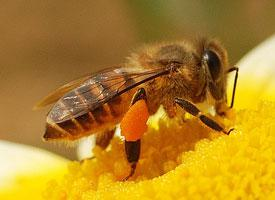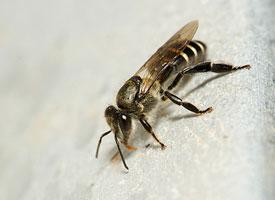
Descrierea animalului
The Eastern honey bee, scientifically known as Apis cerana, is a species of honey bee native to southeastern and eastern Asia, ranging from Japan and Russia down to India and the Malay Peninsula. This bee species plays a significant role in the ecosystem and agriculture through its pollination activities, similar to its more widely known cousin, the Western honey bee (Apis mellifera).Apis cerana is a medium-sized bee, slightly smaller than the Western honey bee, with adults typically measuring between 10 to 13 millimeters in length. They exhibit a brownish color with yellow and black bands across the abdomen, which helps in thermoregulation and serves as a camouflage against predators. Their size and coloration can vary somewhat depending on their specific geographic location, as different subspecies are adapted to different environmental conditions.
One of the most fascinating aspects of Apis cerana is its social structure, which is highly organized and complex. These bees live in colonies that consist of a single queen, thousands of female workers, and, during certain seasons, male drones. The queen is the only fertile female in the colony and is responsible for laying all the eggs. The workers perform various duties, including foraging for nectar and pollen, caring for the brood, building and repairing the hive, and regulating the temperature within the hive. Drones, meanwhile, have the sole purpose of mating with a virgin queen, after which they typically die.
Apis cerana has developed several unique behaviors to cope with threats, particularly from predators such as the Asian hornet (Vespa velutina) and the giant hornet (Vespa mandarinia). One remarkable defense mechanism is their ability to perform a coordinated 'shimmering' behavior, where bees on the surface of the hive wave their abdomens in unison to deter predators. Another defense strategy is the "heat ball" where workers surround an intruder, such as a hornet, and vibrate their flight muscles to generate heat, effectively cooking the intruder alive.
In terms of their ecological role, Apis cerana is an important pollinator for many wildflowers and crops, contributing significantly to biodiversity and agricultural productivity in their native range. They are known to visit a wide variety of plants, and in some cases, they are preferred for certain types of agricultural pollination over Apis mellifera due to their ability to work in cooler temperatures and their more gentle nature.
Beekeeping with Apis cerana has a long history in Asia, where they are often kept in traditional hives made from logs, pottery, or woven baskets. Although they produce less honey than their Western counterparts, their honey is highly valued in local markets. Moreover, their ability to adapt to local climates and resist certain pests and diseases makes them a valuable species for sustainable agriculture and biodiversity conservation.
Despite their resilience, Apis cerana faces threats from habitat loss, pesticide exposure, and competition with the introduced Western honey bee. The spread of the parasitic mite Varroa destructor, initially a pest of Apis cerana but now a global threat to Apis mellifera, also poses a significant challenge. Conservation efforts are crucial to ensure the survival of this beneficial pollinator, which sustains the ecological balance and supports agricultural practices in its native range.
Animale similare
Fotografii noi cu animale
Top 10 animale
- Diana monkey (Cercopithecus diana)
- Dolphin gull (Leucophaeus scoresbii)
- Galápagos tortoise (Geochelone nigra complex)
- Moustached guenon (Cercopithecus cephus)
- Japanese spider crab (Macrocheira kaempferi)
- Colossal squid (Mesonychoteuthis hamiltoni)
- Fox tapeworm (Echinococcus multilocularis)
- Stone loach (Barbatula barbatula)
- Japanese macaque (Macaca fuscata)
- Barbary macaque (Macaca sylvanus)


